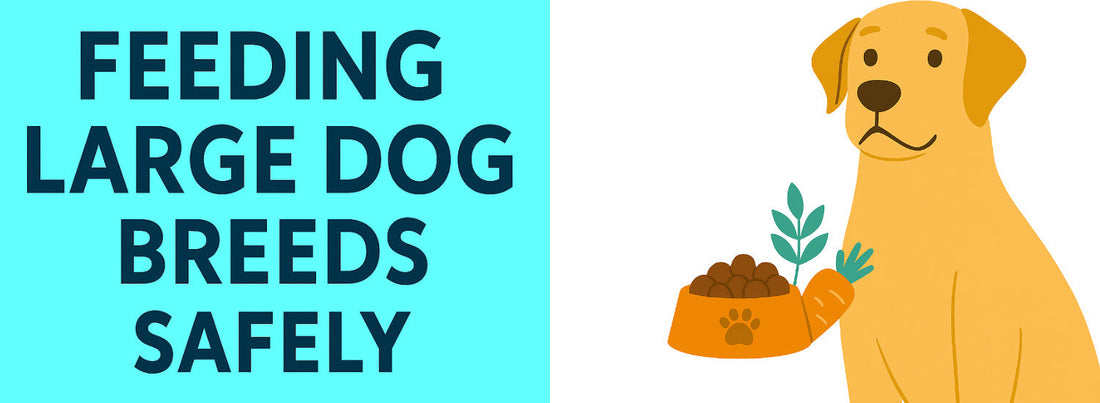
Feeding Large Dog Breeds Safely: A Complete Guide for Pet Owners
Large dog breeds like German Shepherds, Great Danes, and Labrador Retrievers have unique nutritional needs that differ significantly from smaller dogs. Their rapid growth, heavy body structure, and active lifestyle demand a diet that promotes strong bones, joint health, and digestive balance.
In this guide, we’ll cover how to feed large dogs safely, what nutrients to prioritize, and how to avoid common feeding mistakes that could affect their long-term health.
1. Why Large Breeds Need a Special Diet
Large and giant dogs grow quickly in their early months, putting stress on developing joints and bones. Overfeeding or feeding inappropriate food during this growth phase can lead to:
- Hip and elbow dysplasia
- Obesity
- Bloat (gastric torsion)
- Weak joint support
That’s why a tailored feeding plan is crucial from puppyhood through adulthood.
2. Key Nutrients for Large Dogs
Whether you're feeding a puppy or an adult, look for dog food with the following:
- Controlled Calcium and Phosphorus: Prevents overly rapid bone growth.
- High-Quality Protein: Supports muscle development.
- Glucosamine & Chondroitin: Helps maintain joint health and mobility.
- Omega-3 Fatty Acids: Reduces inflammation and supports coat and heart health.
- Fiber & Probiotics: Supports healthy digestion in large digestive tracts.
Make sure the food is labeled “Formulated for Large Breeds” or check the AAFCO standards on the label.
3. How Much to Feed a Large Dog
Large dogs often require between 1,500–2,500 calories per day, depending on their weight, activity level, and age. Always use a feeding chart provided by the manufacturer as a starting point, and adjust based on your dog’s condition.
- Puppies: Feed 3-4 times per day until 6 months, then 2 times per day.
- Adults: Feed 2 times daily to prevent overeating and bloating.
- Seniors: Calorie needs may decrease, but joint supplements become more important.
Use a measuring cup—free feeding is not recommended.
4. Avoid These Common Mistakes
❌ Don’t feed puppy food for too long — switch to large breed adult formula by 12–15 months.
❌ Avoid high-calorie treats — use training-sized treats or healthy snacks like carrots.
❌ Never exercise your dog right after eating — this increases the risk of bloat.
❌ Skip human leftovers — they’re too rich and may upset your dog’s stomach.
5. Feeding Tips for Safety
✅ Use a slow feeder bowl to prevent gulping.
✅ Stick to a consistent feeding schedule.
✅ Provide fresh water at all times.
✅ Consult your vet if you notice weight gain, food allergies, or digestive issues.
6. Considering Raw or Homemade Diets?
If you're exploring raw or home-cooked diets, work closely with a canine nutritionist. Large breeds are especially sensitive to calcium imbalance, and homemade diets often lack key nutrients without proper formulation.
Final Thoughts
Feeding your large dog safely isn’t just about portion size—it’s about providing the right nutrients, structure, and feeding habits to support their well-being at every stage. A thoughtful approach now can prevent joint pain, obesity, and digestive issues in the future.
🦴 Pro Tip: If your large dog is a picky eater, try rotating high-protein kibble with wet food toppers or bone broth for added flavor.
📖 Want to learn more about pet nutrition?
Explore our Pet Food & Nutrition Blog for vet-reviewed articles, expert feeding guides, and tips tailored to your dog or cat’s health and happiness. New posts added weekly!




